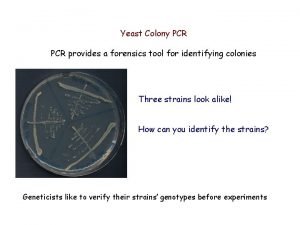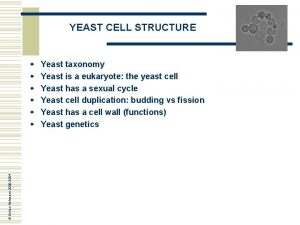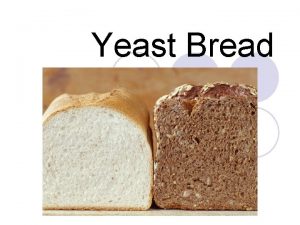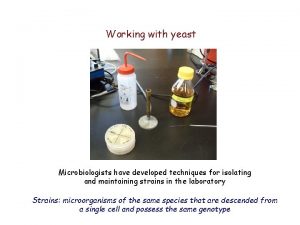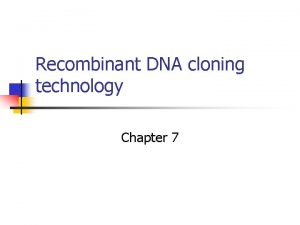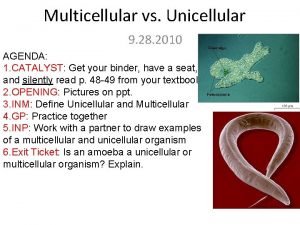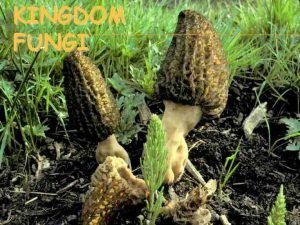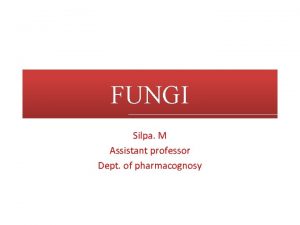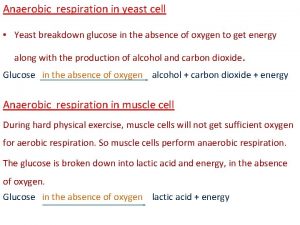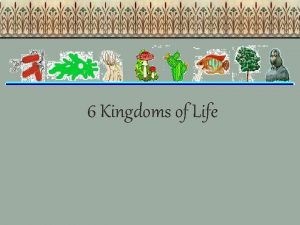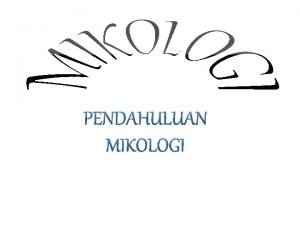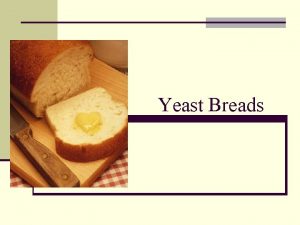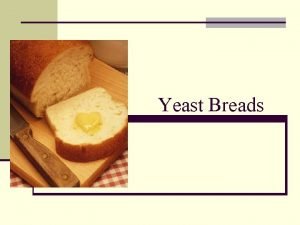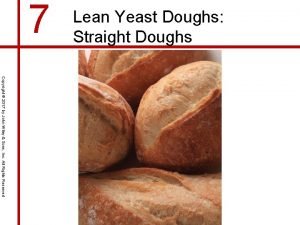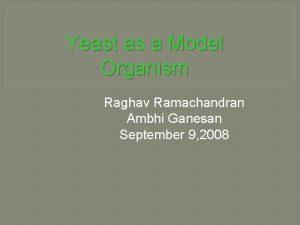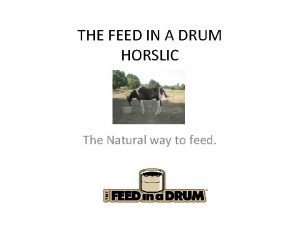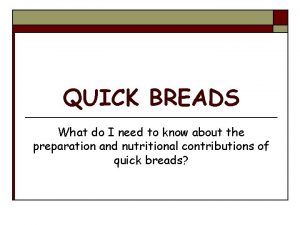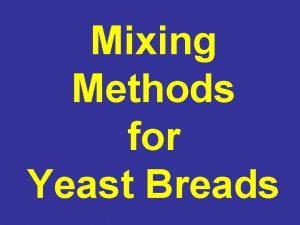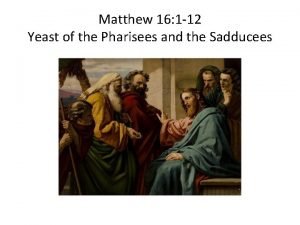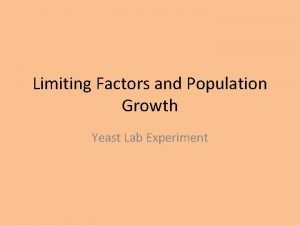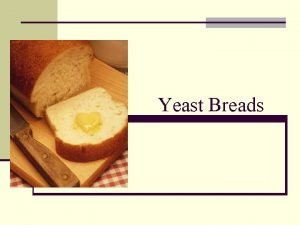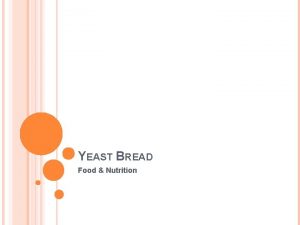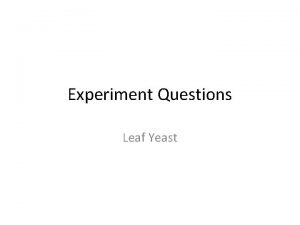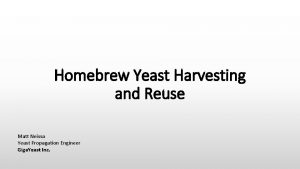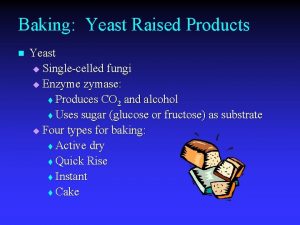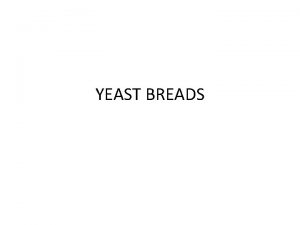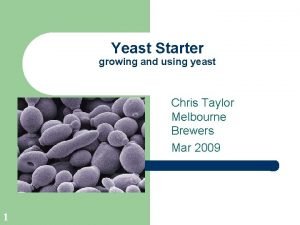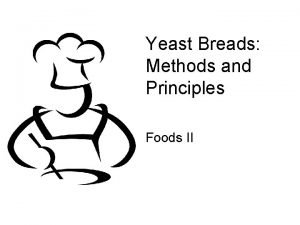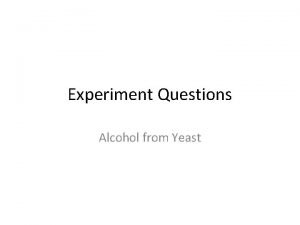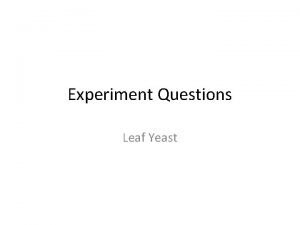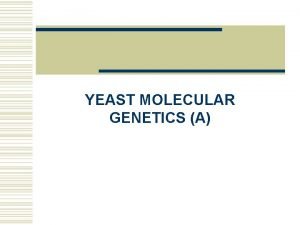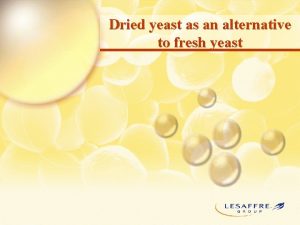Figure 11 0 Yeast Figure 11 1 Communication































- Slides: 31

Figure 11. 0 Yeast

Figure 11. 1 Communication between mating yeast cells Cell Communication • Between separate organisms • Between cells within an organism

Figure 11. 2 Communication among bacteria

Figure 11. 3 Local and long-distance cell communication in animals Communicating cells can be close together or far apart.

Paracrine Signaling • Histamine released by mast cells. • Inflammation of nearby tissue • Increased secretion of stomach acid

Figure 11. 4 Communication by direct contact between cells

Three Stages of Cell Signaling 1. Reception: detection of signal 2. Transduction: signal converted to form that yields cellular response 3. Response Earl Sutherland

Figure 11. 5 Overview of cell signaling (Layer 1)

Figure 11. 5 Overview of cell signaling (Layer 2)

Figure 11. 5 Overview of cell signaling (Layer 3)

Signal Reception • Receptors – Membrane protein – On surface of cell – Specific – Ligand binds receptor causing a change in conformation – Signal transduction pathway initiated • Types of membrane receptors – G-Protein Linked Receptors – Tyrosine kinase receptors – Ion-channel receptors

Figure 11. 6 The structure of a G-protein-linked receptor

Figure 11. 7 The functioning of a Gprotein-linked receptor

Figure 11. 8 The structure and function of a tyrosine-kinase receptor

Figure 11. 9 A ligand-gated ionchannel receptor

Figure 11. 10 Steroid hormone interacting with an intracellular receptor

Signal Transduction Pathways • Process of relaying signal to produce response. • Often several steps/processes • Amplification • Involves second messengers – Cyclic AMP (c. AMP), Ca 2+ • Protein Kinase: Enzyme that transfers phosphate from ATP to a protein • Protein Phosphatase: enzyme that removes phosphate from a protein.

Figure 11. 11 A phosphorylation cascade

Figure 11. 12 Cyclic AMP

Figure 11. 13 c. AMP as a second messenger

Examples of Hormone-induced Cellular Responses Mediated by c. AMP Target Tissue Thyroid gland Muscle Heart Hormone TSH Adrenaline Liver Glucagon Major Response TH synthesis/secretion Glycogen breakdown Increase heart rate/force of contract Glycogen breakdown

Figure 11. 14 The maintenance of calcium ion concentrations in an animal cell

Figure 11. 15 Calcium and inositol triphosphate in signaling pathways (Layer 1)

Figure 11. 15 Calcium and inositol triphosphate in signaling pathways (Layer 2)

Figure 11. 15 Calcium and inositol triphosphate in signaling pathways (Layer 3)

Some Cellular Responses Mediated by G-Protein-linked Receptors Coupled to Inositol Phospholipid Signaling Pathway Target Tissue Liver Signaling Molecule Vasopressin Pancreas Acetylcholine Smooth Muscle Acetylcholine Mast cells Antigen Major Response Glycogen breakdown Amylase secretion Contraction Histamine secretion

Figure 11. 16 Cytoplasmic response to a signal: the stimulation of glycogen breakdown by epinephrine

Figure 11. 17 Nuclear response to a signal: the activation of a specific gene by a growth factor

Amplification of Signal Response

Figure 11. 18 The specificity of cell signaling

Figure 11. 19 A scaffolding protein
 Colony pcr yeast
Colony pcr yeast Yeast taxonomy
Yeast taxonomy Classes of yeast bread
Classes of yeast bread Yeast cell growth curve
Yeast cell growth curve Economic importance of yeast
Economic importance of yeast Yeast artificial chromosome
Yeast artificial chromosome Actisaf live yeast
Actisaf live yeast Is bacteria unicellular or multicellular
Is bacteria unicellular or multicellular Methotrexate yeast infection
Methotrexate yeast infection Single acting baking powder
Single acting baking powder Yeast on koh
Yeast on koh Characteristics of yeast
Characteristics of yeast Capsulated fungi examples
Capsulated fungi examples Dimorphic fungi mean
Dimorphic fungi mean Yeast buds on wet mount
Yeast buds on wet mount Yeast artificial chromosome
Yeast artificial chromosome In an anaerobic condition yeast cells breakdown glucose to
In an anaerobic condition yeast cells breakdown glucose to 6 kingdoms of life
6 kingdoms of life Perbedaan mold dan yeast
Perbedaan mold dan yeast Characteristics of yeast breads
Characteristics of yeast breads Characteristics of yeast breads
Characteristics of yeast breads Yeast is living or nonliving
Yeast is living or nonliving Section 28-1 yeast dough basics
Section 28-1 yeast dough basics Lean yeast dough
Lean yeast dough Is yeast a heterotroph or autotroph
Is yeast a heterotroph or autotroph Raghav ramachandran
Raghav ramachandran The parable of the leaven
The parable of the leaven Diamond v yeast for horses
Diamond v yeast for horses What do fats/shortening do in yeast breads
What do fats/shortening do in yeast breads Straight dough method
Straight dough method Yeast of the pharisees and sadducees
Yeast of the pharisees and sadducees Yeast population growth lab
Yeast population growth lab
